Sitting down to develop a marketing plan for your company can feel overwhelming. As marketers know, the business only gets more complex as time goes on, thanks to ever-changing media options and increasingly sophisticated technologies offering new ways to reach prospects and measure results.
The process we use at the Palmer Ad Agency, which has been built and refined over 30 years to keep pace with the industry, boils down to eight key steps. No matter the size of your company, and no matter your level of experience, you can follow this scalable process when developing your own plan.
The eight steps in developing a marketing plan that conveys and supports your brand, and delivers leads that convert to sales, are:
- Communication
- Identification of Objectives
- Current Brand Evaluation
- Market Research
- Brand Strategy
- Creative Development
- Go-to-Market Strategy
- Accountability
Here’s an explanation of each of the eight steps. We’ll dig deeper into all of these in future posts, so subscribe to this blog (at the end of this post) if you’d like to know more about any of these fundamental building blocks of today's marketing program.
Communication…always easier than it sounds. A clear, open and consistent communication channel between you and your agency, and/or you and your internal colleagues, is essential. You don’t want your great ideas lost behind confusing, convoluted communications. Make sure you have a clear process in place that defines roles and the review and approvals process.
As an outgrowth of this step, you should end up with the list of people who will be involved in the marketing plan’s development and approval. This will likely include others from the Marketing department, and representatives from Sales and Management, at a minimum.
Develop an agenda of deliverables, and hold weekly meetings with your team at which you report on progress and assign next steps with due dates, to stay on track.
Step 2: Identification of Objectives
Capture input from your internal team to help determine the objectives of your marketing plan. This entails more than stating you want to increase revenue or generate more leads; after all, your ability to do that relies on many aspects of the company’s operations.
The goal is to get an honest assessment of the quality of the company’s current leads, and the quality of its content (on the website, sales collateral, blog, digital and traditional ads, etc.). You also want to probe into the company’s current strengths and weaknesses when it comes to brand, sales, marketing and customer service.
We recommend creating a detailed list of questions and obtaining answers through one-on-one interviews with key staff and/or a questionnaire.
Step 3: Current Brand Evaluation
It’s time for some “brand immersion” now—what we call a Brand Audit. Collect feedback about your company’s current brand from company representatives. (Some find it most efficient to do this in conjunction with the previous step; others like to break it out separately.)
What constitutes the face and voice of your company? What distinguishes you from your competitors? For example, does your solar company offer customers multiple choices of panel compared to competitors who cram customers into one of their few favored options? Does your credit union employ people in their twenties to interface with younger prospects and offer a fresh modern style vs. the traditional, stuffy credit union style?
A great way to uncover tidbits that contribute to your brand is to ask the Sales team why they win deals. Why, when a customer buys your product or signs a service contract with you, did he/she/they choose your company instead of another? Most likely, there will be numerous answers, all of which contribute in some way to your brand.
A SWOT analysis also comes in handy at this stage. Working with your team, define the company’s:
- Strengths
- Weaknesses
- Opportunities
- Threats.
These may be internal or external; e.g. a strength might be your internal, topnotch quality control that minimizes product returns. Or it might be that you were first-to-market with your product so you are considered “the original”.
(If needed, a quick online search will turn up many resources on how to conduct a SWOT analysis.)
As the result of all that feedback, you should end up with a decent understanding of where your product fits in the marketplace, at least according to internal knowledge and opinions.
During this stage, Palmer likes to conduct a Studio Review for our clients in which we ask company representatives to review a variety of images depicting different moods, emotions and styles, and different color combinations, and to choose the ones that best fit the brand. This fun process translates some of the intangibles of a brand into something we can use in our creative as we work to convey your brand through color, typography, illustration, photography and theme.
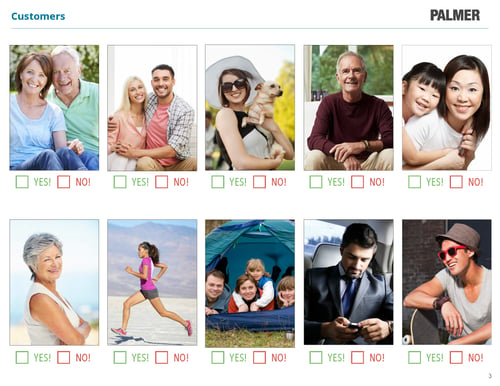
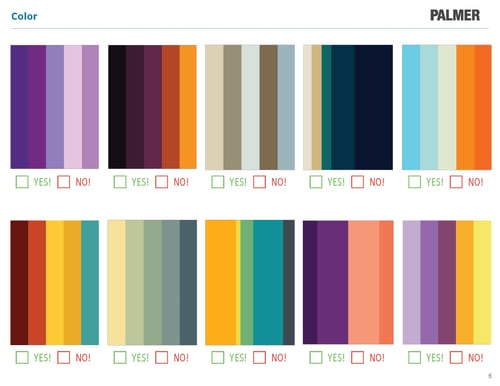
Step 4A: Market Research - Customers & Prospects
Market research is a critical piece of developing your marketing plan. You don’t want to rely on company perceptions when building a marketing program. You want to rely on opinions from those who use your product, and research is how you get that. Market research is the foundation upon which your Brand Strategy, Creative Strategy and Lead Generation Strategy are all built.
We recommend starting with an external Baseline Study that asks prospects and customers the following questions:
- What is their awareness level of your company?
- What are their perceptions of the company?
- What messages do they associate with the company?
- What pain points drive them to seek out a product or service like yours?
Numerous survey methodologies can be used for this, including phone surveys and focus groups. Palmer finds email questionnaires to be the most successful.
With the results of this research in hand, you’ll be able to define the Core Value your company offers its customers, as defined by your customers. In addition, you’ll have a baseline for the company’s awareness and perceptions that you can measure against in 6+ months to prove how much you have increased brand awareness and improved perceptions.
Step 4B: Market Research - Competitors
It's also important to research your key competitors. After all, you’re not competing for business in a vacuum.
Take the time to study the websites and possibly other key materials of your key competitors, to get a handle on their brand and communication strategies. Look at their style and colors to get a sense of their Brand Personality. Look at their taglines and headlines to get a sense of their Brand Messages.
Write down answers to these questions:
- What do they tout as their strengths as a company?
- What messages do they use repeatedly, and which do you find most effective?
- What do you see as their strengths and weaknesses?
We recommend collecting your findings in a spreadsheet that lists the companies, their taglines, their Brand Promise if you can find it, and their Brand Tone and Personality (again, that refers to colors, use of images, and overall style). If available, you could also evaluate the style of their ads. And you might want to add details relevant to your business, such as the number of products they offer and the geographies they serve.
This spreadsheet helps you evaluate what you’re up against, and how you will beat your competitors at their own game.
Step 5: Brand Strategy
Brand is such a huge and important concept. Let’s start with the top three things that make a brand effective:
- It stands out from the competition.
- It is highly relevant to prospects.
- It expresses your unique product or service in a meaningful manner.
Palmer uses a variety of tools and exercises to drill in on a company’s brand. Here are some of them:
Competitive Opportunity Map: Go back to that competitor spreadsheet you created and plot the other companies on a matrix we call a Competitive Opportunity Map. First, choose key aspects of your industry for the x and y axes—aspects that can be used to differentiate you from your competition.
Typical axes include:
- Small Company to Large Conglomerate
- Local to Overseas Location
- Traditional Approach to Modern Approach
- Low-Volume to High-Volume Sales
- Focused Product Offering to Broad Product Offerings
- Poor Reputation to Trusted and Ethical Company.

Now place your competitors into the quadrant that fits them best, and place your company in the "blue water" where no other companies exist. This creates your point of differentiation which you can expound upon. This highly visual tool can be a great way to highlight the opportunity for your brand to stand out from the rest of the pack.
Brand Strategy Wheel: This tool helps you hone in on your Brand Essence: the heart of your brand and what your company stands for. Putting yourself in your prospect’s position, the Brand Strategy Wheel answers two “rational” questions: What does this product do for me? And How would I describe it?. It also answers two “emotional” questions: How does it make me feel? and How does it make me look? The answers will help you drill down to the values and characteristics of your brand, and the core value you offer.
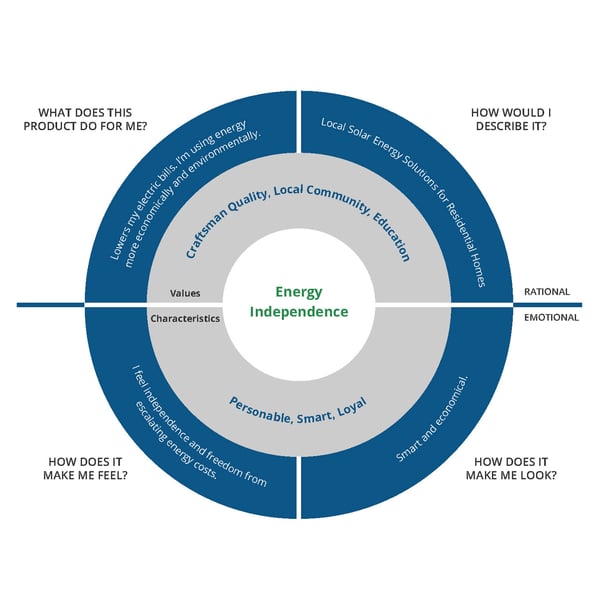
Now, the big kahuna: The Brand Platform. Distill all of the intelligence gleaned to date into the following brand-related components. This may feel like stating the same thing in different ways. That’s okay. Developing these variations often uncovers subtle aspects of your brand that can have a huge impact on your re-branding or presentation of your existing brand.
- Brand Positioning Statement: The core message you will communicate consistently in every medium and to every stakeholder. When done properly, it carves out a place in the prospect’s mind that is positive and a catalyst for action. And ideally, it de-positions the competition.
- Brand Vision: This is an internal message about where you see your business heading. For example, “We will transform the way individuals and families engage with their health insurance providers by providing customer-focused information, education, products and services that not only fully address their urgent healthcare needs but also proactively encourage customers to take charge of their own health and wellness.”
- Brand Values: Name two or three core values identified in your process. This could be things like Knowledge, Integrity or Commitment to Consumer Education.
- Brand Promise: A sentence or two summing up the promise you make to your customers. For example: “We promise to stay with our customers for life, standing behind our products with lifetime warranties and providing simple product updates when they become available to make our customers’ lives more comfortable.”
- Brand Voice: What tone will you communicate in? Do you want to come across as a master of complex theories and interrelated product solutions? Are you a company willing to educate prospects in a straightforward, easy-to-understand manner that guides them to a position of comfort, knowledge and decision-making?
You now have a Brand Strategy— a message all your own, and a comprehensive guide for all your communications and marketing.
Check out our free ebook on the Brand Development Process for an even deeper dive into this topic.
Step 6: Creative Development
Now that you understand your prospects and what they think of you, the competitive landscape, and what makes your brand special, you can build fresh, new creative—concepts, images and copy—that create the desired emotion and elicit the desired response.
It’s usually best to develop a few options for your creative look and feel, but you’ll want to settle on one and use it consistently in all your marketing.
Just can’t bear to part with your second-best idea? Maybe you can incorporate elements of it—a line of copy, an image—into your primary campaign.
Step 7: Go-to-Market Strategy
Taking what you’ve learned and putting your new brand, creative and messaging out into the world is an exciting time. This part of the process, which we call the Go-to-Market Strategy, entails a number of steps as you roll out your new brand and marketing campaigns. Just remember you’ll be working with these for a long time and can refine and re-visit as you go. You can stagger the implementation of the inbound and outbound campaigns. And not all steps are appropriate for all companies.
We divide the Go-to-Market Strategy into the following pieces:
- Brand, as discussed above
- Buyer’s Journey, or the steps a raw lead takes before becoming a customer; this is important for tracking lead status and for crafting content that reaches your buyers at all stages of their journeys
- Website, which is your #1 marketing tool
- Inbound Marketing, which encompasses:
- Email marketing, i.e. sending “eblasts” to prospects (and possibly existing customers) to educate them and ultimately generate leads.

- Social media, using whichever platforms work best for your business—LinkedIn, Twitter, Instagram and Facebook; social media campaigns help build your brand awareness, create engagement with prospects, and drive prospects to your website; in addition to “organic” social media posts, many platforms are ideal for paid advertising, as described below
- Blog, an extremely useful tool for connecting with prospects and other key audiences, delivering key messages, and driving people to your website.
- Search Engine Optimization (SEO), the world of long-tailed keywords, inbound links and off-page SEO, all of which are tools for having your website place higher in online search results, thereby getting you in front of more prospects.
- Outbound Marketing, which today consists primarily of digital advertising for most companies, although traditional media including print ads, radio and TV ads, direct mail and billboards still have a place in some campaigns. In addition to ads on social media platforms, digital ads are often bought on third-party websites related to your business, and to websites visited by people who have also visited your website (“retargeting ads”).
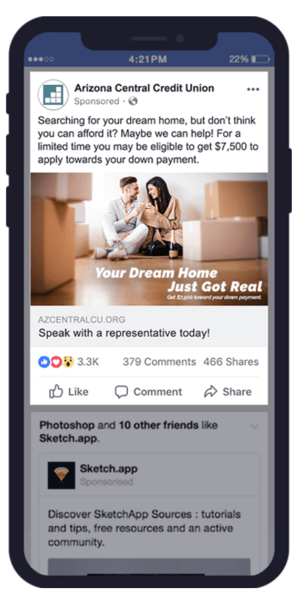

- Marketing Automation, which entails using HubSpot or one of the other platforms available today to implement, manage and track your digital marketing campaigns; products range in price and sophistication and make it easy to set up lead nurturing “workflows”—also called “drip campaigns”—to stay in touch with and, ultimately, educate and win over your prospects.
- Referral Program, in which your customers send prospects your way, often in exchange for some type of reward.
- Reviews & Testimonials, in which customers are encouraged to post online reviews of your product; those testimonials can then be used on your website and in other marketing materials.
- PR, in which press releases, contributed or bylined articles, feature articles and other tactics are implemented to get the company’s name into traditional and digital media, raising awareness and boosting your reputation.
As part of your Go-to-Market Strategy, try to identify Buyer Personas, i.e. the several main types of customer you sell to, based on factors such as age, income level, education level, job—whatever criteria best separate your customers into different buckets and are most relevant to the choices they make when choosing your type of product.

It will be important to create a sophisticated database in which to capture and track leads generated by your inbound and outbound marketing. Many companies use their existing Customer Relationship Management (CRM) software for this purpose. Smaller companies sometimes have homegrown applications. Some Marketing Automation platforms have considerable functionality in this area.
Regardless of what form your database takes, and where it lives, you’ll want to track your prospects as they move through these stages: lead, marketing qualified lead, sales qualified lead, opportunity, customer and ambassador—i.e. a believer in your product who will bring other customers your way.
Step 8: Accountability
You’ve launched your campaigns, the ads are running, leads are coming in…is it time to sit back and relax? Of course not. Your research and analysis are never done!
The good news is, today’s digital platforms including Google and the major social media sites offer in-depth analytics when you advertise with them. You or your agency can gauge the results of your campaigns virtually in real-time and adjust as needed for improved results.
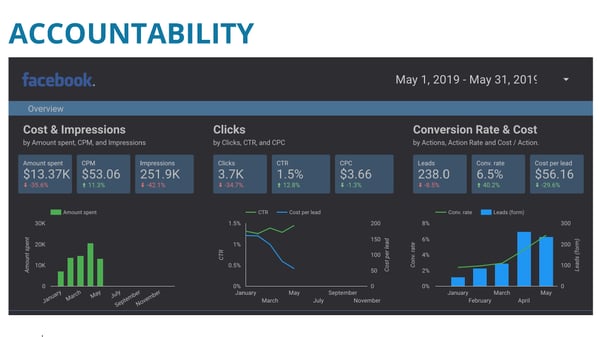
Adding It Up
That’s it. That’s “all” it takes to develop a marketing plan from scratch.
We’ve thrown a lot of concepts, ideas and buzzwords at you. And we didn’t even get to Content Marketing, re-purposing content, audience segmentation, smart CTAs, pay-per-click (PPC) ads or A/B testing. We’ll cover those tactics in future blog posts.
Your plan can be as straightforward or as sophisticated as your staffing level and budget allow. Even if you take our proposed process and strip it down to the barest essentials, you’ll still benefit from going through these eight steps. In the end, you’ll have a much firmer grip on your customer base, your prospects’ needs and desires, and what makes your company special. And that will allow you to generate more leads, close more sales, and improve the company’s bottom line.









